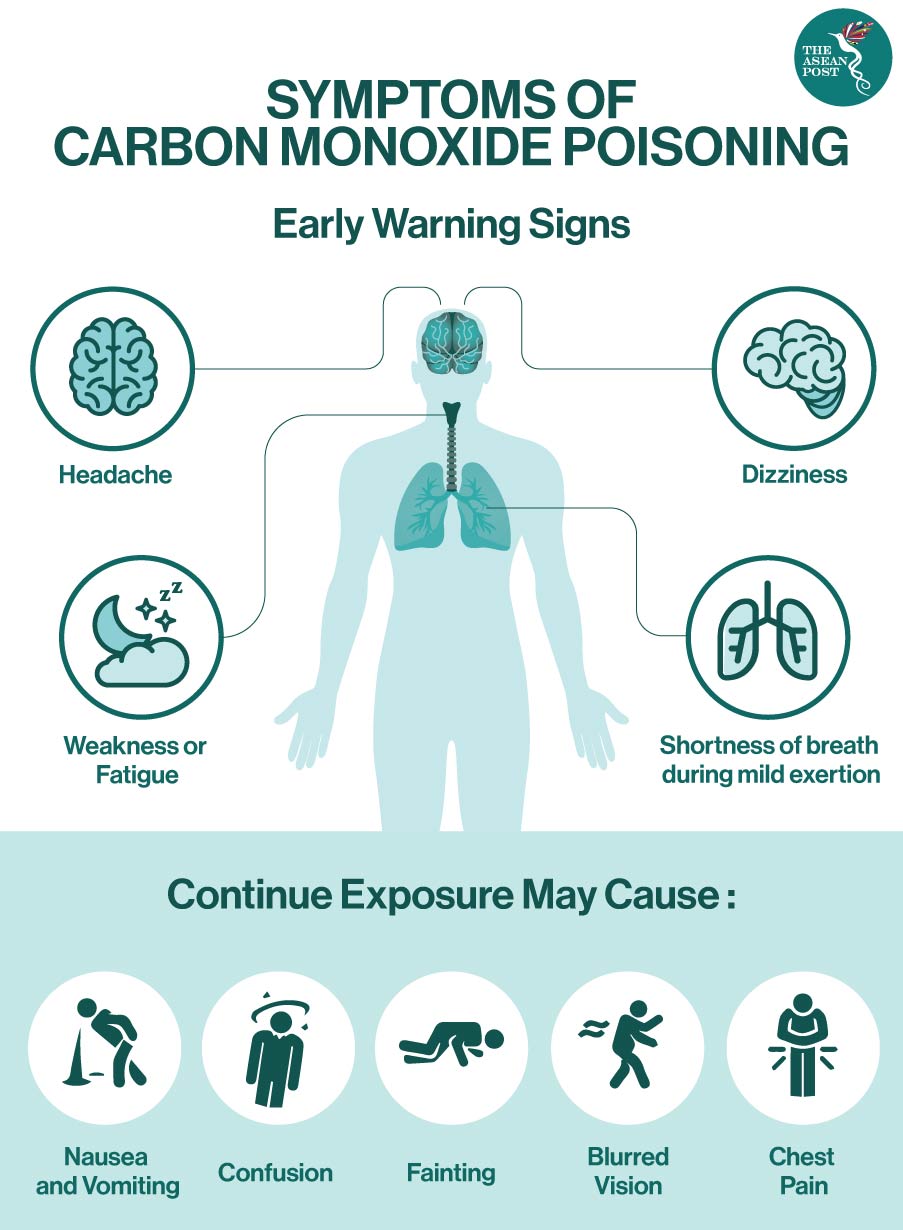
1 Large exposures can result in loss of consciousness, arrhythmias, seizures, or death. 3 Symptoms are often described as ' flu -like' and commonly include headache, dizziness, weakness, vomiting, chest pain, and confusion. For rapidly developing, high level CO exposures (e.g., associated with the use of generators in residential spaces), victims can rapidly become mentally confused, and can lose muscle control without having first experienced milder symptoms they will likely die if not rescued. Carbon monoxide poisoning typically occurs from breathing in carbon monoxide (CO) at excessive levels. For slowly developing residential CO problems, occupants and/or physicians can mistake mild to moderate CO poisoning symptoms for the flu, which sometimes results in tragic deaths. Find first aid advice from St John Ambulance about carbon monoxide poisoning including the causes, symptoms and treatment for carbon monoxide poisoning. Symptom severity is related to both the CO level and the duration of exposure. High level CO poisoning results in progressively more severe symptoms, including: The initial symptoms of low to moderate CO poisoning are similar to the flu (but without the fever). If you suspect CO poisoning, get outside to fresh air immediately and then call 911.īecause CO is odorless, colorless, and otherwise undetectable to the human senses, people may not know that they are being exposed.

CARBON MONOXIDE SYMPTOMS INSTALL
Install battery-operated CO alarms or CO alarms with battery backup in your home outside separate sleeping areas.An open damper may help prevent a build-up of poisonous gases inside the home. Open the fireplace damper before lighting a fire and keep it open until the ashes are cool.Never use a gas range or oven for heating.Never bring a charcoal grill into the house for heating or cooking.Use generators outside only, far away from the home.
CARBON MONOXIDE SYMPTOMS PORTABLE


Penney D, Benignus V, Kephalopoulos S, et al. Clinical Guidance for Carbon Monoxide (CO) Poisoning After a Disaster. Epidemiology, pathophysiology, clinical evaluation, and treatment of carbon monoxide poisoning in child, infant, and fetus. Gozubuyuk AA, Dag H, Kacar A, Karakurt Y, Arica V.


 0 kommentar(er)
0 kommentar(er)
